Content
The difference between a nectarine and a peach is not entirely obvious at first glance, so many people find it difficult to distinguish them from each other. To find differences, you should focus on several criteria at once.
Description and origin
Before you find out what the difference is between peach and nectarine, it is worth familiarizing yourself with the detailed description and origin of fruit crops. After all, not only the fruits differ from each other, but also the trees themselves.
Peaches
Peaches, like nectarines, belong to the Rosaceae family. The origin of the fruiting plant is not known for certain. For a long time, Persia (Iran) was considered the birthplace of the fruit. But some experts are of the opinion that the peach originated in China. This assumption arose after travelers discovered these fruit trees on the border with Tibet.
To date, more than 2,500 varieties have been bred. The height of the trees reaches an average of 4 m with a crown diameter of up to 6 m. Pinkish or reddish flowers appear before the lanceolate leaves, so from afar the plant looks like sakura. It blooms in mid-spring.

The peach tree begins to bear fruit 2-4 after planting in open ground.
Yellow-red or orange fruits, depending on the variety, can be flat, round or elongated elliptical. They have a characteristic pleasant aroma. Inside the fruit there is a large grooved stone with a pointed tip. It contains hydrocyanic acid (hydrogen cyanide), which is a highly toxic substance.
The outside of the fruit is covered with a thin peel, on which there are many soft fibers that protect the fruit from insects.

The pale yellow or beige flesh of the peach is quite soft, with small veins
Ripe fruits should be collected in a timely manner, even before they begin to fall. When dropped, the thin peel instantly cracks and darkens. Overripe fruits not only lose their marketable appearance, but also attract pests.
Unlike nectarines, peaches are more winter-hardy. Some varieties can withstand temperatures as low as -40 °C. They are also much less likely to develop fungal diseases.
Nectarines
Nectarine originated in China. The first written mention of it dates back to 1616.
There is an assumption that nectarine is a hybrid bred by breeders by crossing peach with cherry plum or plum. But in fact, these fruits appeared as a result of a natural mutation of trees.

Nectarine is a subspecies that is also called naked peach.
Fruit trees reach a height of 4 to 7 m with a crown diameter of up to 4 m. They take up less space on the site because they are less spreading. Like the peach, nectarine flowers open before the leaves appear.

It is extremely difficult to distinguish these two plants from each other during flowering.
Fragrant fruits, yellow, red-orange or cherry in color, ripen in summer. The yellowish-orange or pinkish flesh is quite juicy. The nectarine seed is also quite large, containing hydrocyanic acid.

The peel and pulp of the nectarine are bright and dense
Hungry peach is resistant to low temperatures, like an ordinary one, but in regions with harsh winters it requires shelter. At the same time, the fruits stay on the branches longer and rarely crack when falling. The thick, glossy peel protects the fruit from pests.
The difference between a nectarine and a peach
Despite the visual similarity, the difference between bald nectarine and peach is quite large. And it lies not only in the origin and appearance, but also in the chemical composition, texture of the pulp and taste.
What vitamins are in peach and nectarine
Peach fruits contain the following vitamins, macro- and microelements:
- potassium;
- calcium;
- B vitamins;
- selenium;
- manganese;
- fluorine;
- sodium;
- tocopherol;
- phylloquinone;
- magnesium;
- vitamin C;
- iron.
Some varieties also contain beta-carotene, which has a beneficial effect on the condition of the skin, reduces the risk of developing eye diseases and increases concentration.
The chemical composition of nectarine is almost the same as that of peach. But here there are small differences. The subspecies contains higher amounts of vitamin C, tocopherol and potassium. The fruit also contains phenolic acids, which have antioxidant properties and reduce the risk of developing heart and vascular diseases.
Glycemic index of peaches and nectarines
Nectarines, like peach, have a low glycemic index. But in bare fruits it is still slightly higher than in ordinary ones.

The glycemic index of peaches is 35, and nectarines are 43 units.
Taste qualities
You can distinguish a peach from a nectarine not only by appearance, but also by taste. Both fruits have fairly low acidity and become sweeter as they ripen. But starved peaches ultimately turn out to be more sugary and juicy than ordinary ones.
The type of plant also matters. The white varieties are sweeter than the yellow ones.
Texture and size
Nectarines and peaches look almost identical, except for one distinctive feature. The peel of the fruits of the first plant, regardless of the variety, is always smooth and glossy. Peaches have a characteristic pubescence.
The texture of the pulp also varies. In nectarine it is denser, while in peach it is soft.

The fruits of the peach tree are more impressive in size
The weight of the fruit varies depending on the variety. On average, a peach reaches a weight of about 150 g, and a nectarine - about 120 g. At the same time, there are varieties in which the fruits weigh 200 g each.
Use in cooking
The fruits are most often consumed fresh. There is no need to peel them, as they contain dietary fiber. It reduces the risk of heart disease and improves digestion. However, unpeeled fruits are not recommended for allergy sufferers and people with gastrointestinal diseases.
Peaches, like nectarines, can be an excellent addition to cocktails, main courses and yogurts. Ripe fruits are also used to prepare various desserts and drinks:
- jelly;
- cakes;
- compotes;
- juices;
- jams;
- fruit salads and purees;
- cheesecakes;
- sorbets.
It is advisable to serve dishes prepared from peaches and nectarines immediately, as they quickly darken and somewhat lose their taste.
Nectarines and peaches are suitable for canning and freezing. But it is worth considering that during heat treatment there is a significant loss of vitamins. Canned fruits are higher in calories compared to fresh fruits.
Which is better, peach or nectarine?
It is impossible to give a definite answer to this question, since everything depends on individual preferences. Nectarine, like peach, has good taste and is great for preparing a variety of dishes.
Their calorie content is almost the same (39 and 44 kcal per 100 g, respectively), which allows you to consume fruits during your diet. At the same time, nectarine contains 0.6 g less carbohydrates than peach. Regular consumption of these fruits helps burn subcutaneous fat, strengthen the immune system and speed up metabolism.
Both fruits taste quite pleasant, but nectarine is sweeter and juicier. It is also considered healthier than peaches, since the fruit contains higher amounts of certain vitamins and macroelements. In addition, nectarines spoil less during long-distance transportation and last a little longer in the refrigerator.
Conclusion
The difference between a nectarine and a peach is not only minor differences in appearance, but also in chemical composition and taste.It is advisable to eat ripe fruits immediately after picking, as they spoil quickly.
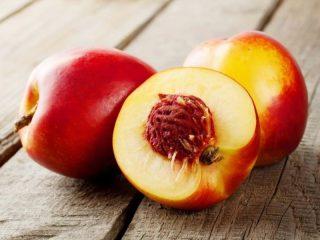

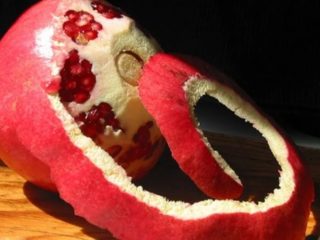
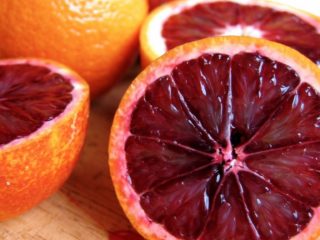
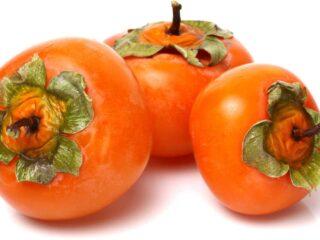
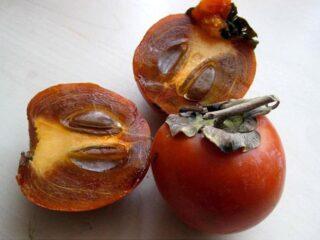
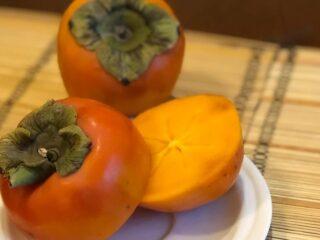


Can peach and nectarine interpollinate?